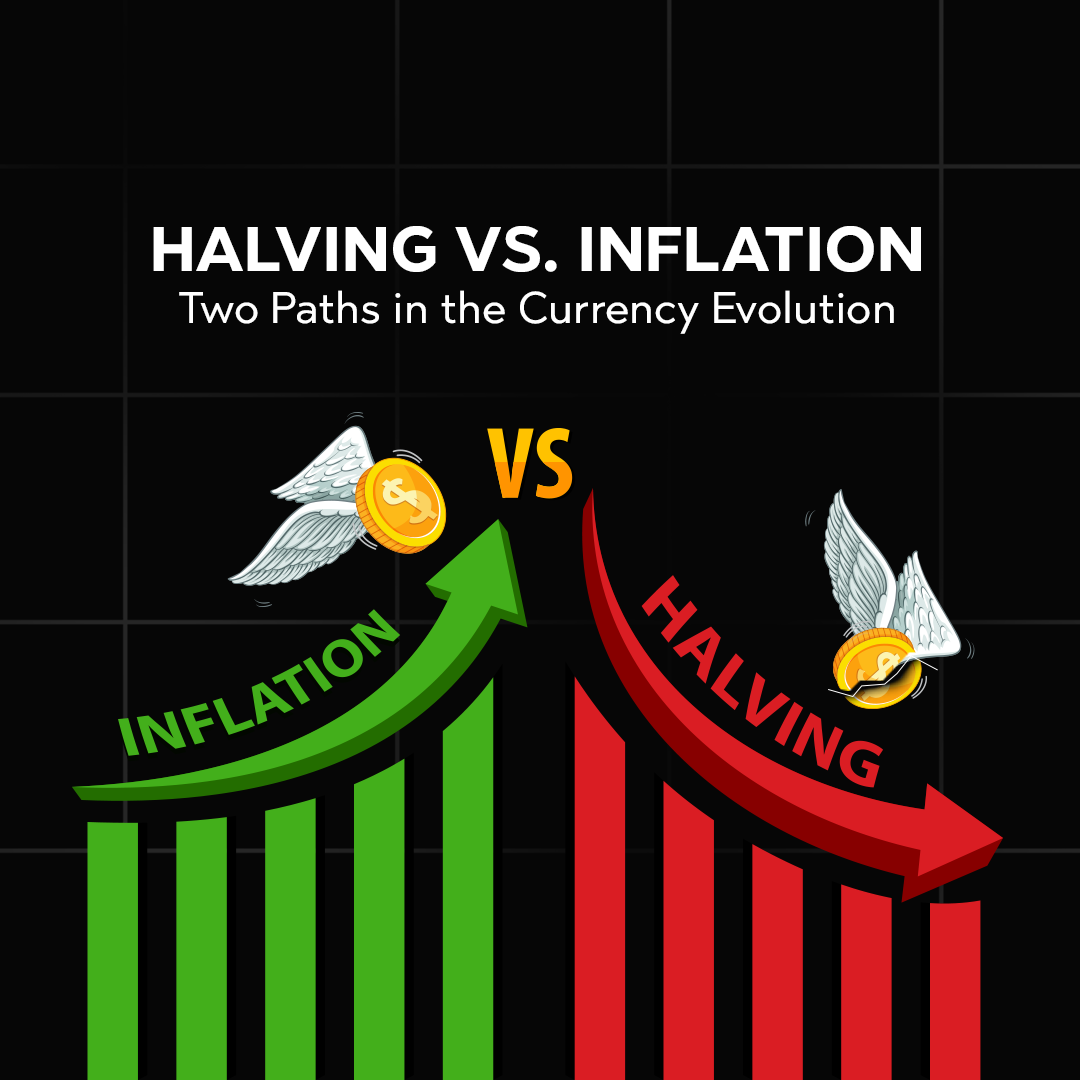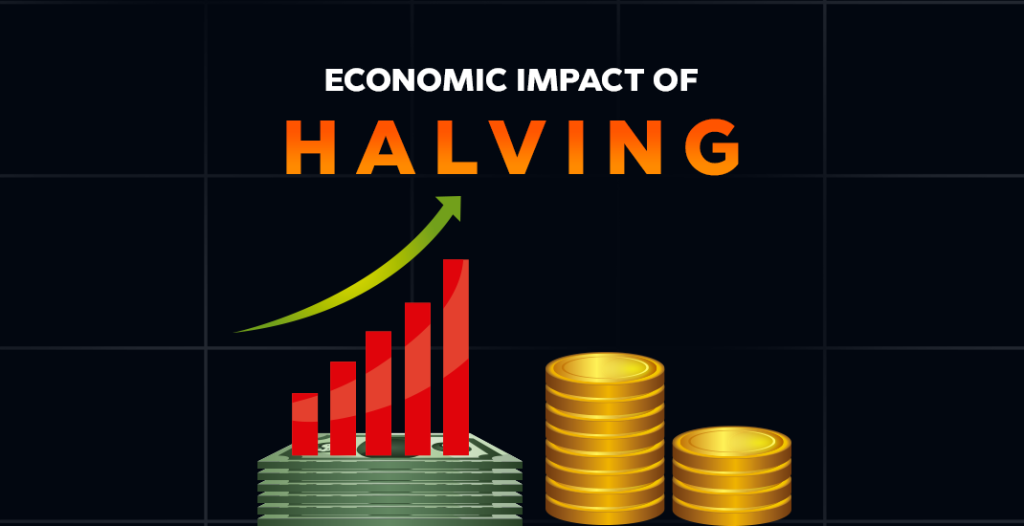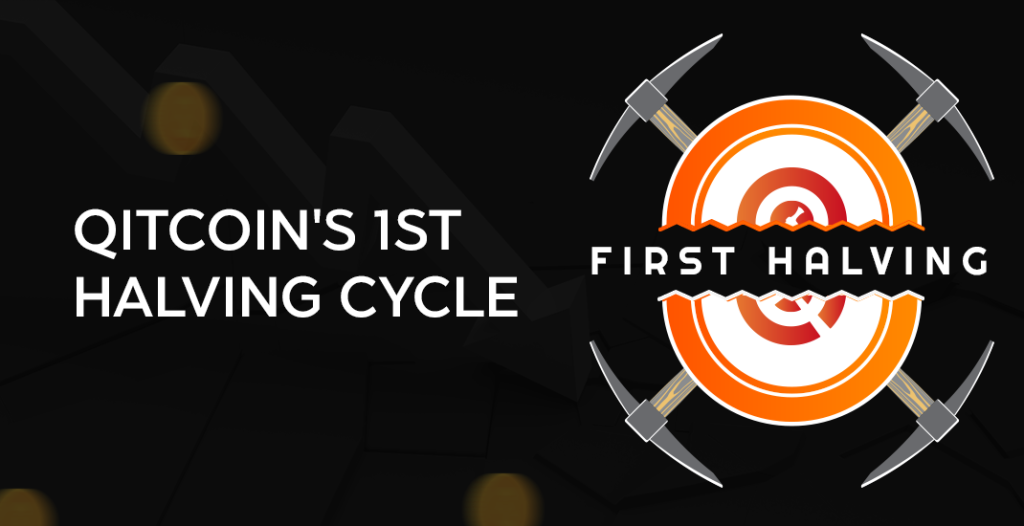
Two Paths In The Currency Evolution
Halving Vs. Inflation
As the world witnesses the emergence of blockchain technology and cryptocurrencies like Bitcoin, the economic dynamics are changing at an unprecedented pace. In today’s rapidly evolving financial landscape, the terms “halving” and “inflation” have become buzzwords, often associated with digital currencies.
Let’s discuss the economic impact of halving, analyze currency devaluation, and touch on the Qitcoin (QTC) phenomenon, where the first halving cycle is around the corner.
Inflation In Traditional Currency
Inflation is a concept that has been around for centuries, impacting traditional fiat currencies like the US dollar, Euro, and others. Simply put, inflation is the gradual increase in prices of goods and services over time, eroding the purchasing power of a currency. Central banks, responsible for issuing and regulating traditional currencies, often aim to maintain a stable inflation rate. However, inflation can be influenced by various factors, including economic crises, government policies, and external events.
One of the main issues with inflation is that it can significantly affect people’s savings and investments. As the value of traditional currency diminishes, individuals often turn to alternative assets like gold or real estate to preserve their wealth.
Digital Currency Advantages
With the advent of blockchain technology, digital currencies have emerged as an alternative to traditional fiat currencies. The most prominent example is Bitcoin, which operates on a decentralized ledger called the blockchain. Unlike traditional currencies, digital currencies offer several key advantages:
Transparency And Security
Transactions on the blockchain are transparent and immutable, making it difficult for bad actors to manipulate the system. This security is achieved through cryptographic techniques, ensuring the integrity of the currency.
Limited Supply
Unlike fiat currencies, many digital currencies have a predetermined supply. Bitcoin, for instance, has a maximum supply of 21 million coins, which creates scarcity and potentially mitigates the impact of inflation.
Accessibility
Digital currencies are accessible to anyone with an internet connection, providing financial services to people in underbanked or unbanked regions, enhancing financial inclusion.
Economic Impact Of Halving

Halving, on the other hand, is a concept unique to digital currencies like Bitcoin and Qitcoin (QTC). A halving event is the process through which the reward that miners receive for validating transactions is reduced by half. The Qitcoin ecosystem is no exception to this phenomenon, and the first halving cycle is just around the corner. But what is the economic impact of such an event?
Scarcity And Demand
One of the most significant impacts of halving is its influence on scarcity. As the rewards for mining are reduced, the rate at which new coins are introduced into the market slows down. This mechanism can create a sense of scarcity, potentially driving up demand and, in turn, the value of the currency.
Miner Behavior
Halving can also affect the behavior of miners. As the rewards decrease, miners must adapt their operations to remain profitable. This can lead to increased competition and innovation within the mining industry, potentially improving the overall security and efficiency of the network.
Currency Devaluation Analysis

With inflation eroding the value of traditional currencies and halving impacting digital currencies, it’s essential to consider how these factors influence currency devaluation.
Traditional Currency Devaluation
In the case of traditional fiat currencies, devaluation is a constant concern. The gradual erosion of purchasing power due to inflation can lead to a vicious cycle. When people expect their currency to lose value, they may be less likely to hold onto it, which can exacerbate inflation. Governments often use monetary policies to control devaluation, but their success can vary.
Digital Currency Devaluation
On the flip side, digital currencies are designed to combat devaluation through mechanisms like halving. The limited supply and predictable issuance schedule of coins like Bitcoin and Qitcoin make them attractive as stores of value. Devaluation is less likely in such a system, providing a potential hedge against economic uncertainty.
Qitcoin’s First Halving Cycle

Now, let’s shift our focus to Qitcoin (QTC). As mentioned earlier, the first halving cycle of Qitcoin is just around the corner. Qitcoin is a promising digital currency that shares many similarities with Bitcoin. It offers the advantages of decentralization, security, and scarcity. The impending halving event in Qitcoin’s ecosystem is an exciting development that can have far-reaching consequences.
Qitcoin’s halving, like Bitcoin’s, will lead to reduced mining rewards. This event has the potential to boost demand for QTC, making it an interesting asset for investors looking for stores of value. However, it’s crucial to keep an eye on the network’s stability and adoption, as these factors will influence the success of Qitcoin in the long run.
Bottom Line
The concepts of halving and inflation (halving vs inflation) are central to the ongoing evolution of currency systems, be it traditional or digital. Inflation erodes the value of traditional currencies, while halving introduces scarcity and demand dynamics in the digital currency world. Currency devaluation is a common concern, and digital currencies are positioned as a potential solution. Qitcoin’s upcoming halving cycle adds a new dimension to this ongoing narrative, making it an exciting asset to watch in the coming years.
As the financial landscape continues to evolve, it’s essential for individuals and investors to stay informed and adapt their strategies to navigate these changing waters. The first halving cycle of Qitcoin serves as a poignant reminder of the transformative power of blockchain technology and digital currencies. Keep an eye on the horizon, as these trends are sure to shape the future of finance.
